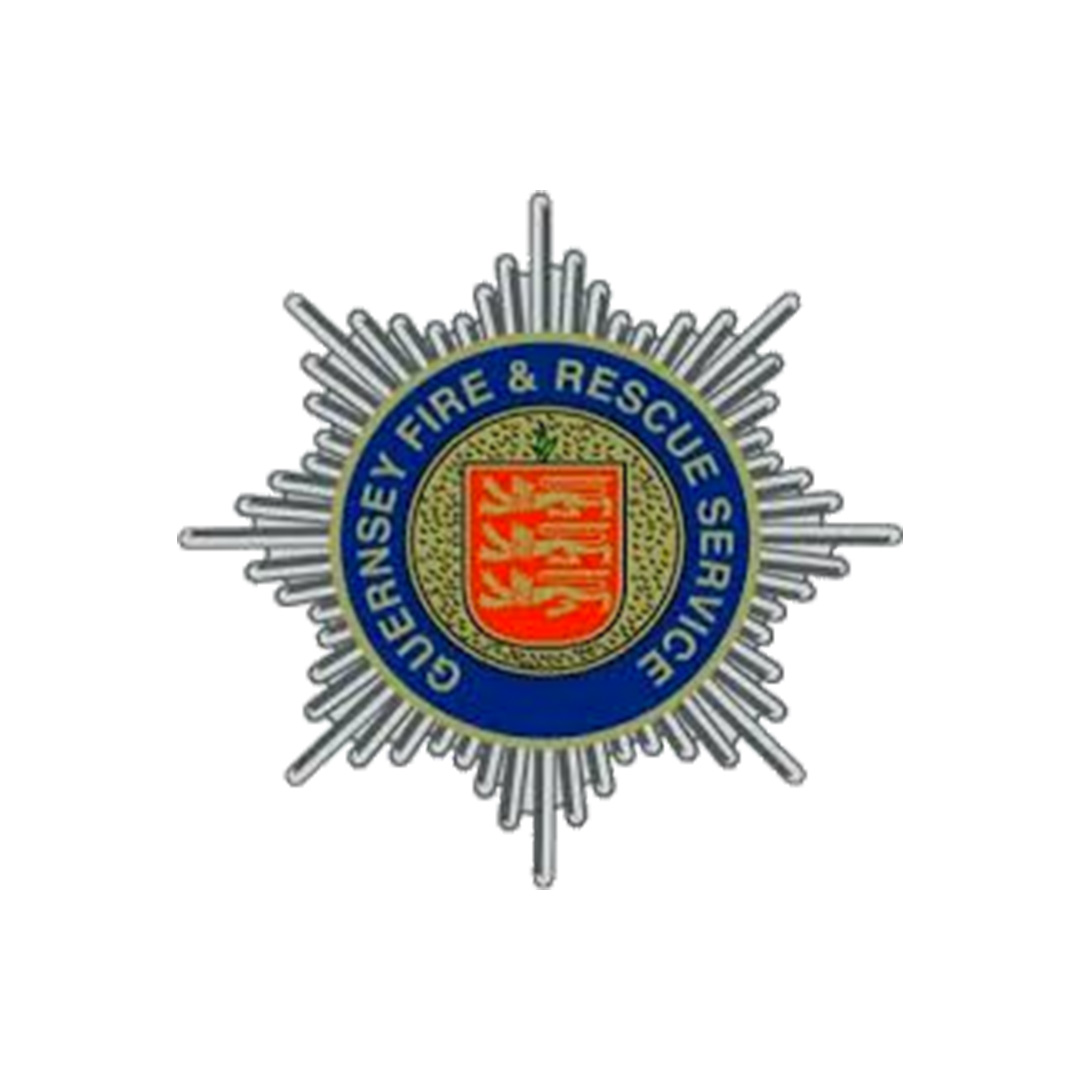How the Fire Safety Stick can help reduce your carbon footprint
Leverage your Fire Safety Strategy with the Fire Safety Stick to meet your Carbon Footprint Goals, and improve your CDP and ESG scores to win tenders
For companies focused on lowering their carbon footprint, every operational choice matters, and fire safety is often overlooked.
Traditional extinguishers carry hidden environmental costs: they’re heavy to transport, require frequent servicing, contain harmful propellants or chemicals, and need regular replacement, all of which contribute to emissions and waste.
By rethinking fire strategy with cleaner, longer-lasting solutions, businesses can cut down on servicing-related travel, reduce chemical and material use, and minimise disposal impacts. This not only supports sustainability targets but also demonstrates a proactive approach to corporate responsibility, turning fire safety from a compliance checkbox into a genuine contributor to carbon reduction goals.
Fire Safety Stick is already helping these companies:















What is the Fire Safety Stick?
The Fire Safety Stick is a compact, long-lasting and highly versatile fire suppression tool. Perfect for stopping early-stage fires in their tracks, without the corrosive mess or toxic residue that can typically be associated with some traditional extinguishers. A perfect and no-brainer solution, especially for businesses that wish to maximise safety, cost effectiveness and carbon footprint reduction initiatives.
How does the Fire Safety Stick Offset or Lower Carbon Footprint?
The Fire Safety Stick is an excellent choice for anyone looking to reduce their carbon footprint while staying protected.
Unlike traditional extinguishers, it’s ultra-lightweight, meaning lower transport emissions. Its clean agent is completely PFAS-free, with zero ozone depletion potential, meaning it won’t contribute to harmful greenhouse gases or long-term chemical pollution. With a 15+ year shelf life and no need for annual servicing, the stick avoids repeated manufacturing, service visits, and disposal cycles that generate unnecessary emissions. When used, it leaves no corrosive mess, eliminating wasteful cleanups and replacements, and at the end of its life, the unit is recyclable, further reducing environmental impact.
In short, it’s a safer, longer-lasting, and cleaner fire safety solution that aligns with sustainable company goals.
Lightweight
215g or 365g vs 2.25kg+ for powder extinguisher – lower logistics emissions
PFAS-free & Breathable vapour
Safe to breathe, no ozone depletion potential, zero toxic residues
No Annual Servicing
Self-check visual maintenance–save service emissions & vendor costs
15+ Year Shelf Life
Outlasts conventional units; inspection extends lifespan
Zero Corrosive Mess
Leaves no corrosive residue, no environmental waste
Recyclable
Plastic handle & aluminium tube are recyclable after use
What are CDP and ESG?
Why they matter to your Business and your Carbon Footprint goals
What is CDP?
CDP (Carbon Disclosure Project) is a global ranking system. Companies earn grades from A to F by how well they measure, manage, and reduce carbon emissions across Scope 1, 2, and 3. In addition, top scorers demonstrate leadership through planning and supplier engagement.
What is ESG?
ESG stands for Environmental, Social, and Governance. This broader rating evaluates a business’s impact, not just emissions, but also chemical use, employee safety, and governance standards. These ratings guide investors, procurement teams, and clients.
CDP Scoring System
CDP Scoring Model:
Score Interpretation A Environmental leader; strong emissions reductions, supplier engagement, targets B Aware of climate issues and taking some actions C Some awareness, but limited action D Disclosed data but little/no evidence of awareness or action F Failure to provide sufficient information CDP Scores are broken down by:
- Disclosure: Has the company reported relevant environmental data?
- Awareness: Does it understand climate-related risks?
- Management: Has it taken action to reduce emissions or manage risks?
- Leadership: Has it shown best practices, verified emissions reductions, or engaged suppliers?
ESG Scoring System
ESG Scoring Examples:
MSCI ESG Ratings (0–10 scale):
Rating Category AAA Leader AA Strong A Average BBB–CCC Laggard Sustainalytics Risk Score:
- Negligible risk: 0–10
- Low risk: 10–20
- Medium risk: 20–30
- High risk: 30–40
- Severe risk: 40+
🔎 Why it matters: ESG scores are used in tender evaluations, supplier screenings, and ESG-linked financing.
Together, CDP and ESG provide strategic frameworks that benchmark sustainability performance, improve climate reporting, and support investor or procurement requirements. As a result, firms that score well in these frameworks position themselves for contract success and competitive advantage.
How the Fire Safety Stick impacts CDP & ESG scores
The Fire Safety Stick isn’t just a safer, cleaner alternative to traditional extinguishers — it’s a strategic asset for companies aiming to improve their environmental performance. This section outlines data tables of how its unique features contribute to stronger CDP scoring and ESG alignment, from reducing emissions and chemical use to simplifying compliance and minimising waste.
Summary Impact Table
| Fire Safety Stick Feature | Benefit | CDP / ESG Impact |
|---|---|---|
| Lightweight (215 g/365 g) | Reduces logistics/Scope 3 emissions | Improves CDP Scope 3, ESG E metrics |
| PFAS‑free | Eliminates chemical risk | Complies with ESG, CDP leadership |
| No servicing | No service‑van emissions | Cuts Scope 3 impact, simplifies ISO docs |
| Visual inspection | Easy user-based checks | Enhances governance, lowers O&M costs |
| Longer shelf + recyclable | Low turnover, circular design | Supports ESG E, ISO 14001 compliance |
| Safe vapour | No toxic exposure risk | Improves Social ESG and safety reporting |
Environmental (E) — Reducing Emissions, Waste, and Chemicals
| Fire Safety Stick Feature | CDP/ESG Benefit |
|---|---|
| Weighs 215g or 365g (vs. 2.25kg+ for 1kg powder extinguisher) | Lighter weight = lower Scope 3 logistics emissions |
| No PFAS (PFAS-free formulation) | Avoids toxic, regulated “forever chemicals” banned by EU/US → boosts ESG compliance |
| No ozone-depleting gases | Supports CDP climate leadership scoring |
| No pressurised gas | Lower embedded carbon footprint, safer handling |
| Vapours are safe to breathe | No toxic exposure → better for indoor air quality ratings |
| Leaves no corrosive residue or mess | No water damage, powder damage, or post-discharge cleanup → reduced environmental cost |
| Avoids replacement of damaged equipment | Using powder extinguishers often results in severe corrosion to electronics, engines, or machinery — leading to costly disposal or replacement. Fire Safety Stick avoids this entirely, leaving only the fire damage to address. This preserves capital assets and reduces unnecessary waste — a critical win for ESG and circular economy goals. |
Social (S) & Governance (G) — Risk, Safety, Compliance
| Fire Safety Stick Contribution | Impact on ESG |
|---|---|
| No pressure cylinder or chemical reaction | Safer for untrained users, reducing workplace accident risk |
| Always ready (no expiration in the conventional sense) | Enhances operational safety and reliability |
| Non-toxic vapour | Improves employee health and safety profile |
| Supports ISO 14001 & ISO 45001 frameworks | Simplifies alignment with procurement standards and global safety norms |
Operational Benefits — Lifecycle, Maintenance & Carbon Savings
| Fire Safety Stick Feature | Sustainability Impact |
|---|---|
| 15+ year shelf life | Outlasts typical extinguishers (5–10 years) → lower product turnover = less waste |
| May exceed 15 years with simple visual inspection | Minimizes unnecessary disposal = supports SDG 12 (Responsible Consumption & Production) |
| No annual servicing or pressure testing needed | Eliminates service van emissions = lower Scope 3 carbon footprint |
| Self-inspection by responsible staff | Cuts reliance on external vendors, lowers cost and simplifies ESG documentation |
Case Study – Murphy Group

Murphy Group’s Carbon Footprint, ESG & CDP impact through fleetwide adoption of the Fire Safety Stick
Murphy Group replaced traditional powder extinguishers across its 1,850+ vehicle fleet with the Fire Safety Stick, reducing weight, emissions, waste, and compliance overhead.
CDP Impact
• Scope 1: Lighter units (2 kg+ savings per vehicle) led to improved fuel economy without behaviour change. Over 25,000 km annually, this avoided 2,775 L of diesel and 7.4 tonnes of CO₂e across the fleet.
• Scope 3: No annual servicing eliminates emissions from service vehicles, parts, and end-of-life processing, contributing to the CDP Management and Leadership criteria.
ESG Alignment
• Environmental: Reduced emissions, no PFAS or corrosive residues, and zero servicing waste.
• Social: No damage to electronics post-fire; safer, cleaner for operators.
• Governance: No pressure tracking, simplified compliance, aligned with ISO 14001/45001.
Strategic Benefit
The switch demonstrates verifiable emissions reduction and risk mitigation, strengthening Murphy’s CDP scores and ESG credentials in tenders and sustainability reporting.
Position yourself as a Carbon Footprint leader. Improve your ESG scores. Comply with CDP. Win greener tenders.
Some examples of
Frequently Asked Questions
Is It Safe To Breathe In A Confined Space?
Yes absolutely! We have tested activating the Fire Safety Stick in a small room to ensure that it doesn’t impact breathing or visibility. We did this in a 3㎥ closed space.
Does It Need Servicing & Does It Have A Shelf Life?
It has a solid construction, no moving parts, and no compressed gas. Which means it will never need an annual professional service; we only recommend a regular self-check visual inspection, which can be documented.
We have batch-tested 15-year-old units and have confirmed our 15-year shelf life claim.
Can The Fire Safety Stick Accidentally Activate or Depressurise?
No, the unit remains fully intact and is not pressurised, and requires deliberate manual operation. Only if exposed to extreme temperatures of 350°C or more would it potentially activate by itself.
Can It Extinguish Lithium-Ion Battery Fires?
The simple answer is NO. Lithium-ion batteries can act like a Roman candle firework if engaged in thermal runaway, spitting heat, ultra-high temperature objects and dangerous gases in all directions. We highly recommend not engaging with such a fire.
How Does The Fire Safety Stick Vapour Work?
It works by interrupting the combustion process by chemically interfering with the oxygen. This does not affect the user’s oxygen, as it does not replace the oxygen but chemically reacts with the oxygen at the flame level. Acting as a screen between the fire and the fresh oxygen supply.
Can I Refill The Fire Safety Stick Once Used?
The Fire Safety Stick is a single-use fire extinguisher. Once activated, it will continue to discharge until empty. Once finished, it’s safe to separate and recycle the two remaining components (the aluminium tube and the plastic handle).
Take the First Step Towards a Better Carbon Footprint Score
Enquire to help your business reduce its carbon footprint and improve your CDP and ESG scores by switching to the Fire Safety Stick.
We will reply to your form submission typically within 1-3 business days. If you wish to call us, our office hours are 9 am – 5 pm (GMT).
